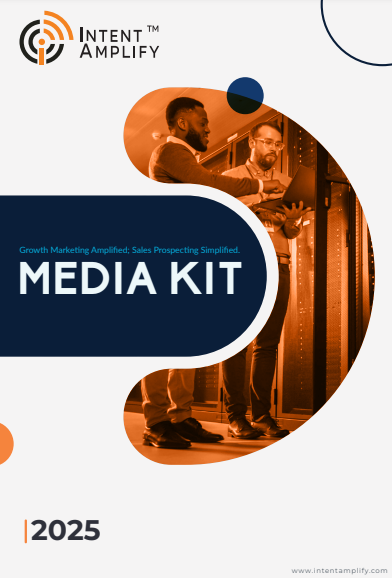
Top 10 Mistakes B2B Marketers Make with Intent Data (and How to Fix Them)
- Last updated on: July 15, 2025
Why Intent Data Matters More Than Ever
If you’ve worked in B2B marketing over the past decade, you’ve witnessed firsthand how the game has changed. Gone are the days when marketing success depended solely on email open rates, form submissions, and generic cold calls. Today, success hinges on understanding buyer behavior before your competitors do and intent data has become the industry’s most valuable shortcut to that insight.
What is intent data? Simply put, it’s tracking online actions and content consumption habits that show a focused interest by the prospect in a particular topic area or product category. It’s the difference between a lost net and a laser beam spotlight on prospects already in the process of making a buying decision.
That’s truer than ever because, as Gartner confirms, just 17% of the purchasing process is spent by B2B customers on negotiating with vendors. The remaining 83% is spent on independent research, solution comparison, reading peer reviews, and social networking in forums. By the time they are ready to engage in a conversation with a vendor, most already have a purchase decision made.
That makes intent data a nice-to-have no more, but mission-critical for sellers and marketers alike today.
And still, with so much at stake, intent data remains woefully underutilized or worse, abused. A 2024 Forrester poll reveals that although 62% of B2B marketers indicate intent data is critical to demand generation, 55% admit they are not certain they are getting the most from those insights.
And that’s where this article steps in. We’ll dispel the top 10 most common errors marketers are committing with intent data day in and day out, why they’re happening, and give you research-based, actionable solutions to implement today. Get ready for guilty-by-association moments, a dash of humor (since marketing isn’t surgery), and actionable insight to drive your intent programs with all pistons firing.
What Is Intent Data and How Does It Work?
Before jumping into pitfalls and solutions, it’s worth nailing down just what intent data is – and isn’t.
Intent data is data collected on a person or company’s web activity showing they have an interest in buying a certain product, service, or topic. It is web body language. When a prospect visits price pages, downloads competitor comparisons, and reads leadership content on a topic, they demonstrate intent to buy.
Intent data commonly originates in two locations:
- First-Party Intent Data: Data you capture from your premises site visits, email engagement, webinar registration, gated content download, and product trial registration.
- Third-Party Intent Data: Third-party collected data from publishers’ networks, forum discussions, review sites, ad clicks, and research firms. All these third-party providers, such as 6sense, Bombora, and G2,2, track such behavior and make it available through integrations and dashboards.
The beauty of intent data lies in its ability to reveal anonymous and emerging buyers not yet on their screen. It helps sales and marketing teams to:
- Prioritize accounts in real-time.
- Personalize outreach based on real interest.s
- Reveal groups of buyers within an account.s
- Enhanced pipeline opportunity forecasting
But it ain’t magic. Intent data is a signal, not a verdict. To use it as an absolute fact in isolation is a misfire and that’s where the errors most B2B marketers are making come in and how to course-correct them.
Top 10 Mistakes B2B Marketers Are Making with Intent Data (and How to Correct Them)
1. Using only First-Party Data
The Weakness: Not enough teams are considering website, email, or event data in combination.
Why It’s Constrictive: Off-site research time is where buyers spend more time. 6sense’s 2024 report estimates 70% of a buyer’s research off a vendor-owned website.
The Answer: Mine third-party intent streams such as Bombora, G2, and ZoomInfo to incorporate off-site activity and complete the buyer journey profile.
2. Equating Every Intent Signal
The Fallacy: Assuming a trip to the price page is the same as a trip to the blog page.
Why It’s Deceptive: Not all actions are equal when it comes to buying-readiness weight.
The Fix: Create a multi-touch scoring model. Weighs more heavily higher-intent activity (e.g., product comparison, demo requests) than earlier-stage activity. Automate with Demandbase.
3. Failing to Consider Buying Group Behavior
The Fallacy: Following up on individual intent signals vs. following up on the entire buying group.
Why It’s a Problem: Gartner 2024 Research confirms B2B buying groups typically involve 6-10 stakeholders
The Fix: Account-level map intent signals. ABM 6sense and RollWorks enable you to follow up on intent on every persona within an account.
4. Delaying Follow-Ups on High-Intent Signals
The Mistake: Waiting days before reaching out after a high-intent signal.
The Risk: Intent cools fast. SiriusDecisions found that a lead is 21% less likely to qualify when contacted more than 30 minutes after intent activity.
The Fix: Build instant notifications on your CRM or Slack pipelines to alert reps the instant high-value intent activity is being created.
5. Over-Personalizing a Single Action
The Mistake: Over-reading a single action.
The Fix: Cross-validate patterns across a sequence of activities before heavy personalization. Cross-validate with technographics and firmographics to avoid spamming.
6. Intent Data to Sales Team Alignment Failure
The Mistake: Rambling intent insight in marketing.
The Fix: Leverage intent dashboards together with sales through CRM integrations. Look at intent every week to orchestrate coordinated outreach. Use Revenue Operations platforms for unified visibility.
7. Anonymous Buying Signals (Dark Funnel Activity) Not Being Considered
The Error: Staying anchored in the boundaries of known contacts.
Why It’s Dangerous: 70% of anonymous B2B buyer activity.
The Solution: Leverage anonymous intent data tools and predictive analytics to reveal hidden accounts.
8. Missing Data Enrichment and Hygiene
The Error: Letting duplicate or stale records make targeting look bad.
The Solution: Enrich data monthly with tools like ZoomInfo Enrich or Clearbit.
9. Reporting Vanity Metrics Instead Of Pipeline Impact
The Mistake: Measuring clicks and MQLs without revenue has been executed.
The Solution: Create closed-loop reporting dashboards measuring how intent programs are impacting pipeline velocity, conversion rates, and deal size.
Build closed-loop dashboards measuring revenue influence with tools like HubSpot Revenue Attribution.
10. Structuring Intent Programs to Lead Gen
The Mistake: Limiting intent programs to acquisition campaigns.
The Solution: Leveraging intent insights on customer renewal strategy, competitive churn prevention, upsell campaigns, and customer success touchpoints.
Best Practices for Using Intent Data in 2025
Intent data is not plug-and-play magic. Process and alignment are necessary to push signals into revenue. Listed below are field-tested best practices that separate successful intent programs from the others:
Read Intent Data into Every Aspect of the Whole Revenue Team
Intent intelligence far too frequently gets bypassed, trapped in marketing dashboards. Customer success and sales must be able to see and respond to them if intent programs are to succeed.
Pro Tip: Use CRM triggers to trigger Slack/Teams notifications for sales reps in real-time for high-intent action. Have bi-weekly intent alignment calls with SDRs, marketing, and AEs regularly.
Score and Prioritize Signals Contextually
Not all intent activity is created equal. Prioritize higher-value activities such as product page views, price views, or competitor comparisons over yesterday’s blog read.
Tip: Develop a weighted scoring model with weights to score each level of interaction, weighted by persona seniority and alignment to the account’s ideal customer profile (ICP).
Add Intent in Buying Groups
No single decision-maker in sophisticated B2B transactions. If three from the same company are all buying the same know-how, that’s a hot account.
Action: Employ ABM tools such as Demandbase or 6sense to monitor and create intent signals at the buying group and account levels.
Personalize Outreach Based on Valid Patterns
Individuals can be deceptive through signals. Wait for consistent patterns over multiple touchpoints before making highly specific outreach or offers.
Pro Tip: Combine intent with firmographic and technographic data to prevent meaningless targeting.
Clean and Enrich Your Data Regularly
Stale or stale intent data pollutes targeting and extends sales cycles. Run data hygiene scans every 30 days.
Enrichment services like Clearbit, Leadspace, and ZoomInfo Enrich must be utilized to enrich data and fill data gaps.
Future Trends – Where Intent Data Is Headed in B2B Marketing
Intent data has grown exponentially over the last five years, and tomorrow’s revolution will do it even faster and more value-driven, and complex for B2B marketing decision-makers. That is where the future is headed:
Predictive Analytics + Intent Data
Furthermore, more integrated intent platforms with AI-based predictive analytics are coming up in the pipeline. These solutions, beyond detecting buying intent, will forecast deal potential, account score, and forecast churn risk with precision to the point.
Dark Funnel Visibility
Much of today’s purchase behavior is anonymous. Cutting-edge new anonymous web visitor de-anonymization and IP-based account matching technology will shed light on these dark funnel behaviors.
It means that marketers will hear about interested, unknown buyers sooner, much sooner than usual form fills happen.
Hyper-Personalized, Real-Time Engagement
Intent-based personalization will transition away from batched email sends to one-to-one, real-time conversations. Sites, chatbots, and ad campaigns will alter messaging and promotions in real-time as a function of real-time intent signals.
Example: If a lead has consumed three AI data security blog articles, your site can present a personalized case study and invite them to a relevant webinar when they return.
Conclusion
Intent data offers remarkable potential – but only when marketers treat it with the discipline and context it deserves. As we’ve covered, the most common mistakes stem not from a lack of tools but from misaligned processes, poor timing, and incomplete execution.
Let’s quickly recap the essentials:
- Blend first- and third-party intent signals for a complete picture.
- Score and prioritize intent signals by context and value.
- Track buying groups, not individual leads.
- Act fast on hot intent signals before intention is lost.
- Don’t over-personalize for single-user behavior.
- Flip sales and marketing teams on from the same intent plan.
- Launch an anonymous activity to focus on your dark funnel.
- Cleanse, enrich, and maintain data hygiene freshness regularly.
- Measure influence on pipeline and revenue, not vanity metrics.
- Resupport intent use cases for new business acquisition alone.
If any of these gaps resonate, you’re in good company. Even sophisticated marketing teams can fall into these traps. The upside? Each mistake has a clear, actionable fix, and correcting them means more qualified leads, faster sales cycles, and a healthier, more predictable pipeline.
Now’s the time to get up close and personal with your intent data efforts. Identify those blind spots. Simplify your follow-up processes. Get your teams in sync. And start turning signals into revenue.
Because in today’s B2B market, the smartest and quickest to act win.
FAQs
Q1. What is intent data in B2B marketing
Answer: Chat data tracks online activity of an individual or company (e.g., visits to product pages, downloads of content) to indicate interest in a specific product or topic. It enables marketers to find and engage with individuals genuinely researching a solution.
Q2. Where is intent data coming from?
Answer: First-party websites, email, and webinars gather intent data from first-party platforms, while third-party networks like review websites, publishers, and forums add intent data. Platforms like Bombora, 6sense, and G2 gather this data and share insights with marketers.
Q3. Why is intent data important in 2025?
Answer: Because much of B2B buying research is off-site and anonymous from vendor locations, intent data enables brands to identify active prospects earlier and receive faster, more relevant engagement and more pipeline predictability.
Q4. How do sales teams utilize intent data?
Answer: Intent signals can be utilized by sales teams to qualify prospects, personalize the message, identify at-risk accounts, and reveal upsell opportunities. With intent data integrated into CRM and sales engagement platforms, smart and timely follow-up can be achieved.
Q5. Which are the top intent data providers in the market today?
Answer: The top shelf intent data platforms currently available are Bombora, 6sense, Demandbase, ZoomInfo, and G2 Buyer Intent. It’s gonna all come down to your industry target, geography scope, and use cases.





